Disclosure: This article contains affiliate links. We may earn a commission from purchases at no extra cost to you, which helps our travel content.
When most folks think of Casablanca, they conjure up images of Humphrey Bogart, misty airports, and that famous line about beautiful friendships. I'll admit, that's exactly what was on my mind when my flight touched down in Morocco's largest city last October. But let me tell you something - the real Casablanca has a whole lot more going for it than old Hollywood nostalgia. As someone who's spent decades tracking down family histories and finding connections in unexpected places, I was surprised to discover that this modern Moroccan metropolis offered this old forest ranger something I wasn't expecting: a perfect blend of authentic cultural immersion without breaking the bank. So grab your comfortable walking shoes and join me as I show you how to make the most of 48 hours in Casablanca on a reasonable budget, with some hidden treasures that most guidebooks won't tell you about.
Day 1: Morning – Hassan II Mosque & Old Medina
I started my Casablanca adventure the way any sensible budget traveler should - with an early morning visit to the Hassan II Mosque before the crowds and heat take over. Let me tell you straight - this isn't just another religious building. Standing on the Atlantic shoreline with waves crashing beneath parts of its glass floor, it's one of the few mosques in Morocco that welcomes non-Muslim visitors. At 60 dirhams (about $6), the guided tour is worth every penny.
The 60-minute tours run several times daily in different languages, but I recommend the 9:00 AM English tour. My guide, Fatima, shared insights about Islamic architecture that I wouldn't have noticed on my own. The craftsmanship here is mind-boggling - hand-carved cedar ceilings, marble columns, and mosaic work that would make any woodworker or craftsman stand in awe.
After the mosque, I walked about 25 minutes to the Old Medina (or grab a petit taxi for around 20 dirhams if your knees aren't what they used to be - mine certainly aren't). Unlike the picture-perfect medinas of Fez or Marrakech, Casablanca's old quarter feels refreshingly authentic. No one's putting on a show for tourists here.
I wandered through the narrow alleyways, where locals were going about their daily business - shopping for produce, sipping mint tea, and fixing household items. For lunch, I followed my nose to a tiny place called Snack Amine where I had a delicious chicken shawarma sandwich for just 25 dirhams. No fancy menus or English translations - just point and smile if your French or Arabic isn't up to snuff (mine sure isn't).

💡 Pro Tips
- Dress respectfully for the mosque - shoulders and knees covered for everyone, and women should bring a scarf for their head.
- The mosque tour doesn't run on Fridays or during prayer times - check the schedule beforehand.
- In the medina, keep small bills handy and don't be afraid to politely haggle, but remember that saving a dollar means much more to them than to you.
Day 1: Afternoon – Art Deco Architecture & Habous Quarter
After lunch, I headed to Mohammed V Square to admire Casablanca's famous Art Deco architecture. This city went through a building boom in the 1920s and 30s during the French colonial period, resulting in a fascinating blend of European Art Deco with Moorish influences. They call it 'Mauresque' architecture, and it's something special.
I'm no architecture expert, but even this old forest ranger can appreciate these elegant buildings with their curved facades, intricate tilework, and ornate details. The contrast between these structures and the ultra-modern skyscrapers nearby tells the story of a city constantly reinventing itself.
Before setting out, I made sure to load some offline maps onto my smartphone power bank, which was a lifesaver throughout my trip. When you're walking all day taking photos and checking directions, battery life becomes precious.
In the late afternoon, I took a petit taxi to the Habous Quarter (also called the New Medina), built by the French in the 1930s as a more orderly version of a traditional market. Here, you'll find beautiful handicrafts without the overwhelming hustle of larger souks. The olive market is particularly fascinating - dozens of varieties I'd never seen before.
For a perfect afternoon pick-me-up, I stopped at Patisserie Bennis, a Casablanca institution since 1938. Their gazelle horns (kaab el ghazal) - crescent-shaped cookies filled with almond paste and scented with orange flower water - paired perfectly with a mint tea. At 10 dirhams each, these treats won't break the bank but will certainly satisfy your sweet tooth.
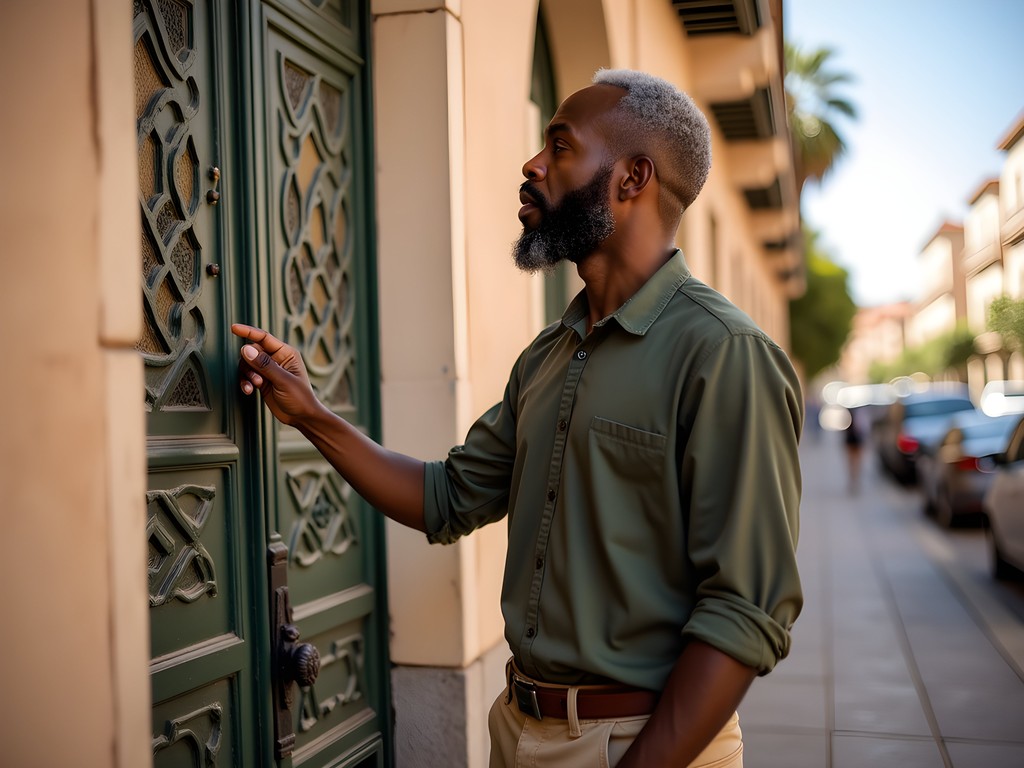
💡 Pro Tips
- Many Art Deco buildings are still functioning government offices or apartment buildings - be respectful when photographing.
- The Habous Quarter shops typically close for a few hours during midday prayer and lunch - plan accordingly.
- If buying souvenirs, the fixed-price shops in Habous generally offer fair prices compared to the Old Medina where haggling is expected.
Day 1: Evening – Corniche & Rick's Café
As the day cooled down, I made my way to La Corniche, Casablanca's seaside promenade. This stretch along the Atlantic Ocean is where locals come to breathe, exercise, and socialize. I've always found that the best way to understand a place is to see where its people go to relax, and the Corniche delivers that authentic experience.
I strolled along the beach boardwalk, watching families picnicking, teenagers playing soccer, and fishermen trying their luck as the sun began its descent. Having spent decades as a forest ranger in Canada, I've developed a deep appreciation for how different communities connect with their natural surroundings, and there's something special about how Casablancans embrace their coastline.
For dinner, I couldn't resist visiting the famous Rick's Café. Yes, it's inspired by the film and no, it's not the original (which never existed outside a Hollywood set). But owner Kathy Kriger, an American expat, created something special here in 2004 - a beautiful restaurant housed in a traditional Moroccan mansion that captures the film's ambiance perfectly.
At 200 dirhams (about $20) for a main course, it's not a budget meal by Moroccan standards, but the experience is worth the splurge. I nursed a single drink at the bar, listening to the pianist play 'As Time Goes By' while chatting with the friendly bartender about how the real Casablanca compares to the Hollywood version.
To capture the evening's magical light along the Corniche, I relied on my trusty travel camera. Its compact size makes it perfect for travel, yet the image quality is remarkable even in challenging lighting conditions. After years of documenting my genealogical journeys, I've learned that a good camera is worth the investment when you're trying to preserve memories.
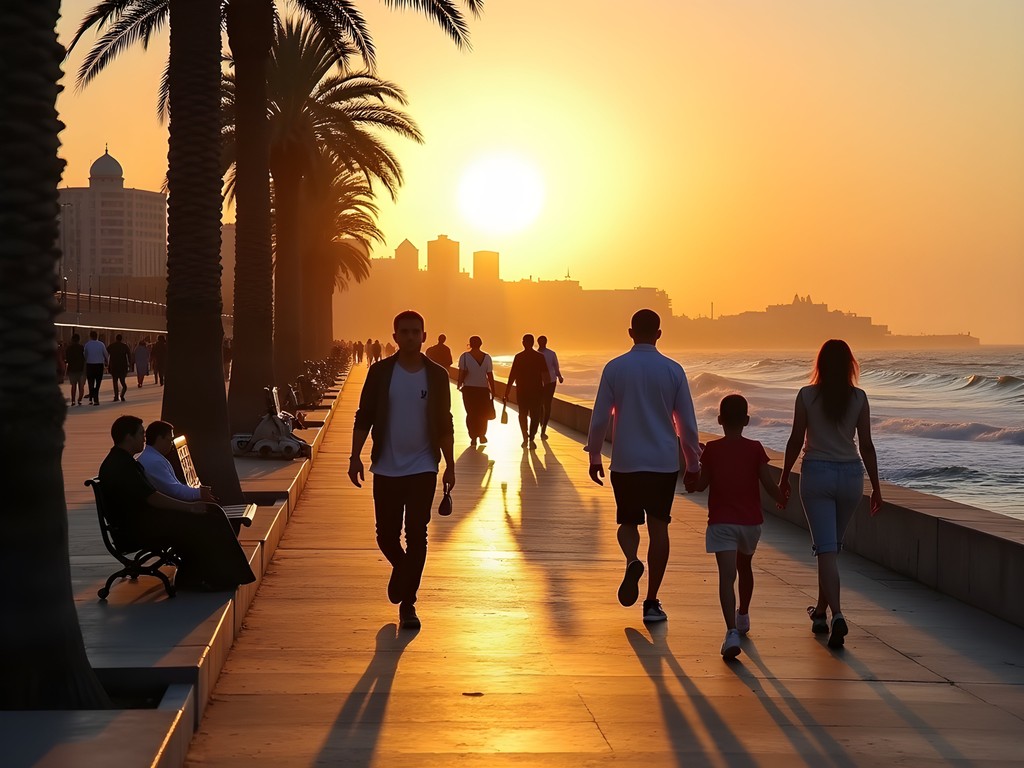
💡 Pro Tips
- La Corniche is best visited around sunset when the light is golden and locals come out for their evening stroll.
- Rick's Café gets busy - make a reservation if you want a table for dinner, or come early for a drink at the bar.
- If Rick's is beyond your budget, the Corniche has plenty of affordable seafood restaurants with ocean views.
Day 2: Morning – Central Market & Quartier Habous
I started my second day at Casablanca's Central Market (Marché Central), arriving around 8:30 AM when local vendors were setting up their stalls. This is where Casablancans do their daily shopping, and the morning offers a symphony of sights and smells that tell you more about Moroccan culture than any museum could.
The fish section displays the morning's catch straight from the Atlantic, while the olive vendors create colorful mountains of different varieties. What caught my attention most were the spice merchants with their vibrant pyramids of colorful powders. Having traced some of my own ancestry back to West Africa years ago, I've always been fascinated by the spice trade routes that connected Africa, the Middle East, and Europe.
I struck up a conversation with Mohammed, a spice vendor whose family has run the same stall for three generations. He patiently explained the different spice blends used in Moroccan cooking. I walked away with a small bag of ras el hanout (a complex blend of up to 30 spices) that cost just 20 dirhams and has been flavoring my camp cooking back in Canada ever since.
For breakfast, I followed Mohammed's recommendation to a small café near the market entrance where I enjoyed msemen (square-shaped Moroccan pancakes) with honey and a glass of freshly squeezed orange juice for about 25 dirhams.
After the market, I took a taxi to the Villa des Arts, Casablanca's premier art museum housed in a stunning Art Deco building. The collection focuses on contemporary Moroccan and international art, and admission is free. I've found that local art often reveals aspects of culture that history books miss entirely. The museum was refreshingly uncrowded, allowing for an unhurried appreciation of works that blend traditional Moroccan influences with modern artistic expressions.
For keeping track of all these experiences, I've found my travel journal invaluable. After decades of documenting my travels and genealogical discoveries, I've learned that memories fade but written reflections last. Each evening, I spend 15 minutes jotting down observations, conversations, and unexpected discoveries that might otherwise be forgotten.
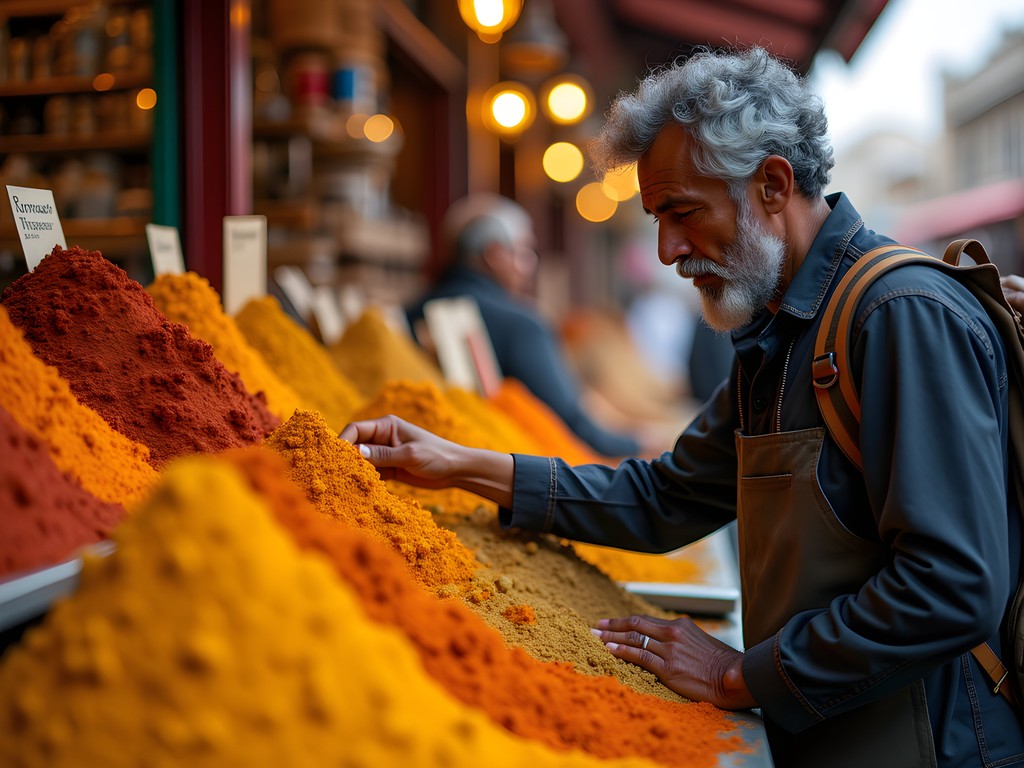
💡 Pro Tips
- Bring small bills for the market and don't be afraid to sample before buying - most vendors are happy to offer a taste.
- The Central Market is closed on Sundays, so plan accordingly.
- If you're interested in photography, ask permission before taking close-up photos of people or their goods - a smile and 'Mumkin sura?' (Can I take a photo?) goes a long way.
Day 2: Afternoon & Evening – Morocco Mall & Final Impressions
For my final afternoon, I decided to explore a side of Casablanca that many travelers miss - its modern face. I headed to Morocco Mall, one of Africa's largest shopping centers, not to shop (though there are plenty of options from luxury brands to local crafts) but to observe contemporary Moroccan life.
The mall features a massive aquarium at its center and an indoor musical fountain that puts on regular shows. What fascinated me most was watching the diverse cross-section of Casablanca society - teenagers in the latest Western fashions alongside families in traditional dress, all sharing the same space comfortably.
I've spent enough time in rural communities across North America to know that shopping malls often serve as important social hubs, and Morocco Mall is no different. I found a café with a view of the main atrium, ordered a coffee, and spent an hour people-watching, one of my favorite travel activities.
For my last evening, I sought something authentic and affordable. I found it at La Sqala, a restaurant built into the walls of an 18th-century Portuguese fortress. Their menu offers traditional Moroccan dishes at reasonable prices (main courses from 80-120 dirhams). I ordered a chicken tagine with preserved lemons and olives that transported me straight to a Moroccan grandmother's kitchen.
As the sun set on my 48 hours in Casablanca, I reflected on how this city had surprised me. It's not the exotic Morocco of travel brochures, nor is it merely a business hub to rush through. Instead, it's a complex, living city where Morocco's past, present, and future converge in fascinating ways.
Before leaving for the airport the next morning, I made one final stop at Café M'Rabet for a last glass of mint tea. Sitting there watching the city wake up, I pulled out my travel guidebook to mark the places I'd need to explore on my inevitable return visit. Because if there's one thing this old forest ranger has learned after decades of exploration, it's that the most interesting places are those that reveal their secrets slowly, one layer at a time.
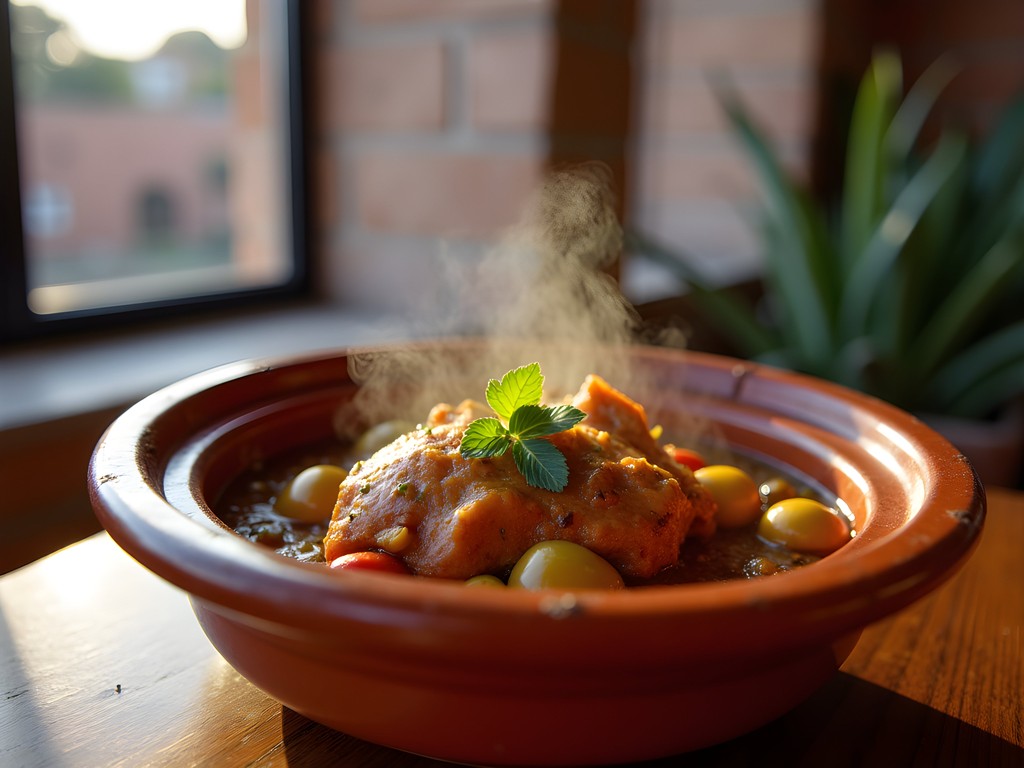
💡 Pro Tips
- Morocco Mall has a free shuttle from various points in the city center - check schedules at your hotel.
- La Sqala gets busy for dinner - arrive early (around 6:30 PM) or make a reservation.
- For your departure, arrange a fixed-price taxi to the airport through your accommodation to avoid last-minute negotiation hassles.
Final Thoughts
Casablanca may not have the immediate charm of Marrakech or the ancient allure of Fez, but that's precisely what makes it special. It's a city that doesn't perform for tourists - it simply lives, breathes, and evolves on its own terms. In just 48 hours, I found connections to history, art, cuisine, and most importantly, people going about their daily lives. As someone who's spent decades helping others trace their family histories, I've learned that the most meaningful travel experiences come when we look beyond the obvious tourist attractions and seek authentic connections. Casablanca offers these in abundance if you're willing to step off the beaten path. So pack light, bring an open mind, and prepare to discover a Morocco that exists beyond the postcards and movie references. The real Casablanca might just be the beginning of a beautiful friendship indeed.
✨ Key Takeaways
- Casablanca offers an authentic glimpse into modern Moroccan life that more touristy cities often lack
- The city can be explored effectively on a modest budget with strategic splurges
- The blend of French colonial architecture, Islamic traditions, and contemporary Moroccan culture creates a unique urban experience
📋 Practical Information
Best Time to Visit
Fall (September-November) or Spring (March-May)
Budget Estimate
$50-80 per day including modest accommodations, food, and attractions
Recommended Duration
2-3 days
Difficulty Level
Easy
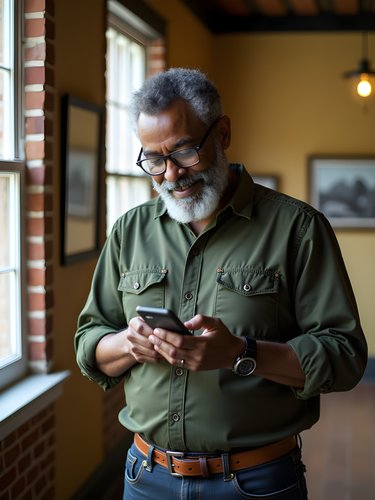
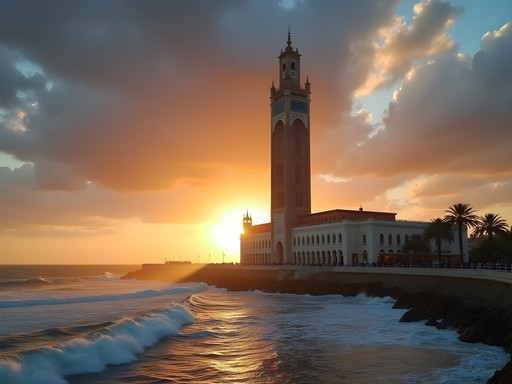
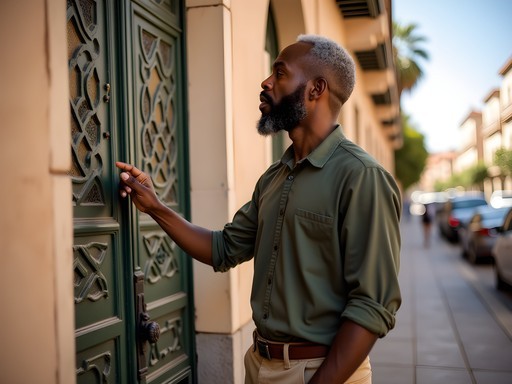
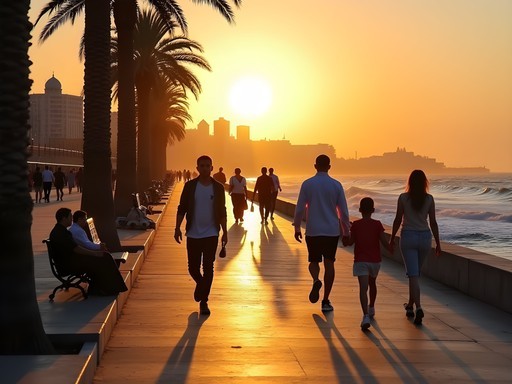
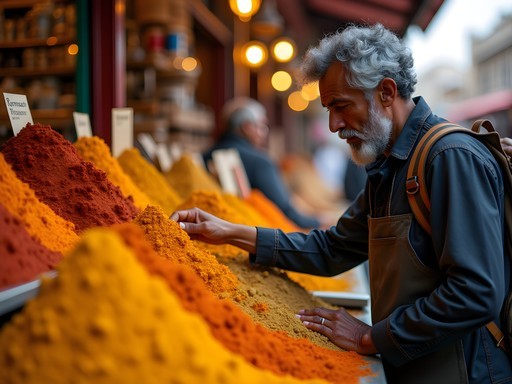
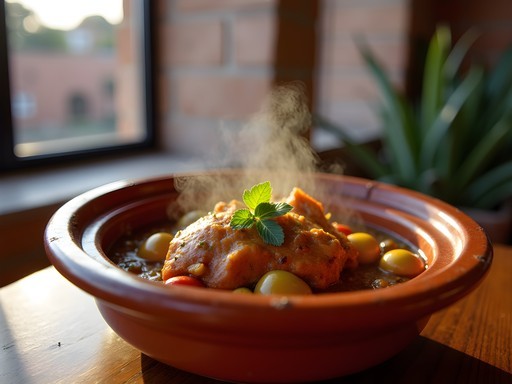


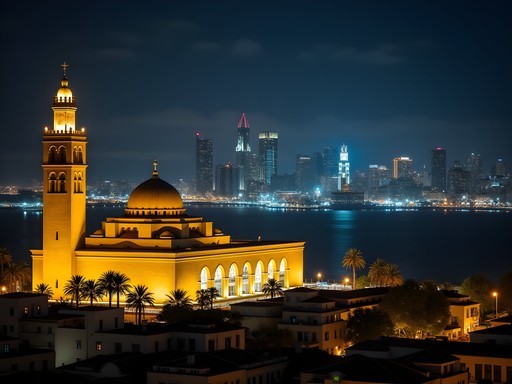


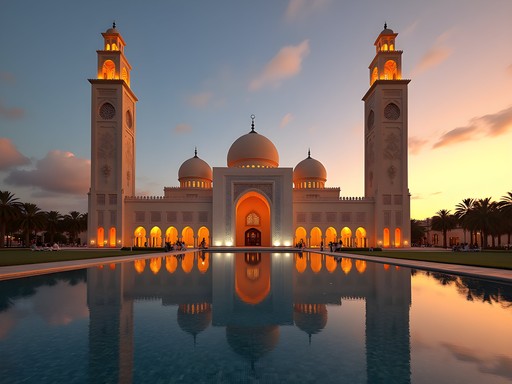
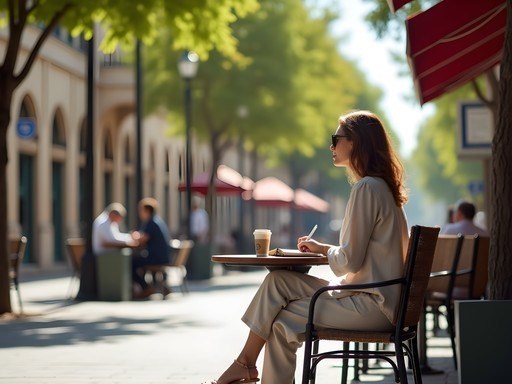
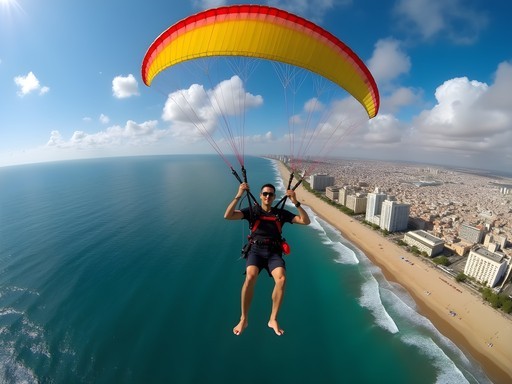
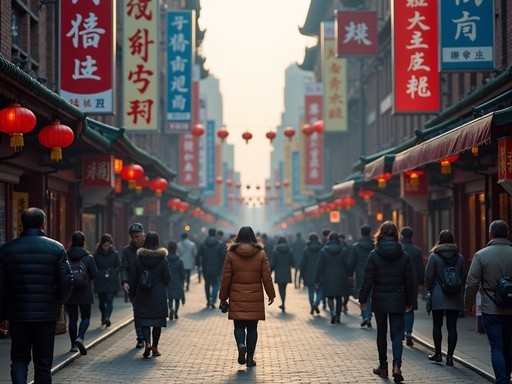
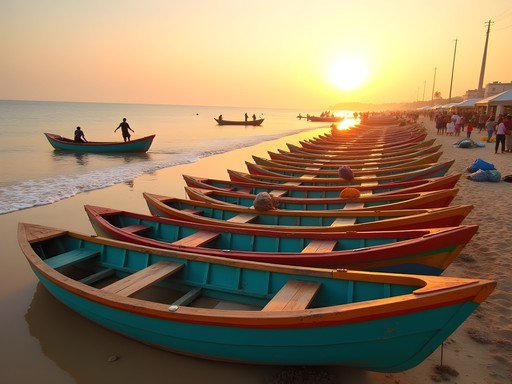
Comments
rednomad
Just got back from Morocco last week and spent 3 days in Casablanca! Wish I'd seen this post before going. The Art Deco architecture was such a surprise - felt like I was in Miami sometimes! One thing to add - the seafood market in the morning is AMAZING but go early (like 7am early) to see the real action. We hired a local guide through our riad who took us behind the scenes and introduced us to his fisherman friends. Got to try stuff I couldn't even name! Also, don't miss Sqala in the old medina for dinner - beautiful garden setting and their pastilla is the best I had in Morocco. The hammam experience at Le Spa was worth every dirham after a long day of walking.
wavemate
Is Rick's Café really worth it or just a tourist trap? And what's the best spot for photos of the mosque?
springqueen
Rick's is touristy but fun! Food is decent but pricey. For mosque photos, there's a perfect spot across the water near the esplanade that frames it beautifully, especially around sunset!
Sage Dixon
Jerry, your post brought back so many memories! I was in Casablanca last spring during an unexpected sandstorm. There I was, trying to photograph Hassan II Mosque when visibility dropped to almost nothing. The locals just laughed and invited me into a nearby café where I ended up spending three hours talking politics with university students. That's the Casablanca most tourists miss - it's not just the architecture but the people who make this city special. One tip for anyone going: don't skip the Villa des Arts. It's small but showcases amazing contemporary Moroccan artists and was practically empty when I visited. Also, I found using the tram system super easy with the offline map app that let me navigate without data.
wavemate
Did you need a guide for the Villa des Arts or can you just wander around on your own?
Sage Dixon
You can definitely explore on your own! They have some information sheets in English, but bringing a guidebook helps for context. The building itself is a beautiful art deco mansion worth seeing even apart from the exhibits.
travelblogger1377
How safe did you feel walking around Casablanca at night? Planning a solo trip there soon.
Jerry Ray
I felt quite safe in the main tourist areas and near the Corniche. Just use normal city precautions - stick to well-lit streets at night and keep valuables secure. The area around Hassan II Mosque and the beachfront areas are well-patrolled.
springqueen
Great post! I visited Casablanca last year and totally agree about Hassan II Mosque - it's breathtaking! We went for sunset and the light hitting those mosaics was magical. One thing I'd add is to definitely take a guided tour inside since they explain all the intricate details you'd otherwise miss. The medina was more chaotic than I expected but found some beautiful leather goods. Rick's Café was touristy but I'm a sucker for movie references so I loved it anyway!
Jerry Ray
Thanks springqueen! That sunset tip at the mosque is spot on - I should have mentioned that specifically. Did you try the seafood at the Corniche?
springqueen
Yes! Had amazing grilled sardines at a little place with plastic chairs right by the water. So simple but so good!
coolexplorer
Just got back from Casablanca and used your guide extensively, Jerry! One thing I'd add - the rooftop at SKY 28 bar in the Kenzi Tower Hotel offers absolutely stunning sunset views of the Hassan II Mosque and the Atlantic. Worth the slightly pricey drinks! Also, Rick's Café was much better than I expected. The piano player knew every song from the movie and the food was surprisingly good. Did anyone else feel like the Old Medina was a bit underwhelming compared to ones in Fez or Marrakech?
luckymood
Totally agree about the Medina! Casablanca's is more for locals, not as touristy. That's what I actually liked about it!
coolexplorer
Good point! It felt more authentic, just different expectations I guess.
bluemood
Great post! How did you find getting around Casablanca? Is it safe to use public transport or should I budget for taxis? Also, did you feel safe walking around with camera equipment?
coolexplorer
Not the author, but I visited last year and found the tram system super easy to use and very affordable. I carried my camera bag everywhere without issues, but stayed aware of my surroundings like in any major city.
bluemood
Thanks for the info! That's really helpful.
Taylor Moreau
Excellent guide, Jerry. I was in Casablanca last year for business and found myself with a similar 48-hour window to explore. The Hassan II Mosque is indeed breathtaking, though I'd recommend visitors arrive early to avoid both crowds and midday heat. One thing I'd add is that the Art Deco architecture tour is much more enjoyable with a knowledgeable guide - I used a local architecture student who pointed out details I would have completely missed. Rick's Café was admittedly touristy, but sometimes embracing the obvious attraction is part of the fun. Did you manage to visit any of the contemporary art galleries? They offer a fascinating glimpse into modern Moroccan culture.
coolexplorer
Taylor, how did you find the architecture student guide? That sounds perfect for my trip next month!
Taylor Moreau
I connected with him through my hotel concierge. Many of the better hotels have relationships with student guides from the local university. Just ask at reception!
luckymood
Beautiful photos of the Hassan II Mosque! Adding Casablanca to my bucket list now!
Taylor Moreau
The mosque truly is spectacular. Make sure to book a guided tour - the interior craftsmanship is just as impressive as the exterior.
luckymood
Thanks for the tip! Will definitely do that!
summerone
We just got back from Morocco and used this guide for our Casablanca portion - spot on! Rick's Café was such a fun experience even if it's touristy. We added a day trip to El Jadida (about 1.5 hours away) which has this amazing Portuguese cistern that was in the movie Orson Welles' Othello. Highly recommend if anyone has an extra day!
springperson
How did you get to El Jadida? Train or did you hire a driver?
summerone
@springperson We took the train! Super easy and cheap (about $4 each way). They run every couple hours. Just make sure you get back before dark as the last train is around 8pm.
Venture X
Premium card with 2X miles, $300 travel credit, Priority Pass